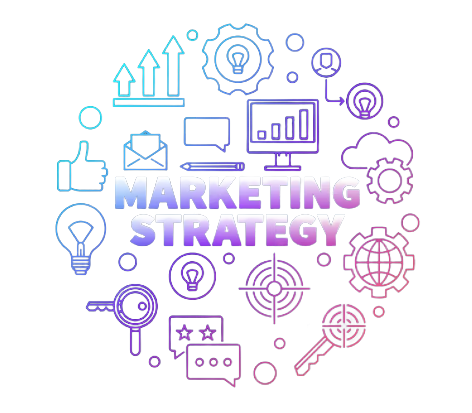Building a successful digital marketing strategy requires a comprehensive approach that involves understanding your target audience, setting clear goals and objectives, creating engaging content, leveraging multiple channels, and continuously monitoring and adapting your strategy.
In today’s digital age, a successful digital marketing strategy is essential for businesses of all sizes. With more and more consumers using the internet to research and purchase products and services, a well-executed strategy can help businesses increase brand awareness, drive traffic to their websites, and ultimately boost sales. However, building a successful strategy can be challenging, with a myriad of factors to consider. In this blog post, we will discuss some best practices and challenges of building a successful digital marketing strategy.
Defining Your Target Audience
The first step in building a successful digital marketing strategy is defining your target audience. By understanding who your customers are, their needs and pain points, and how they behave online, you can create targeted content that resonates with them. Some ways to define your target audience include conducting market research, analyzing customer data, and creating customer personas.
Setting Clear Goals and Objectives
To ensure your digital marketing strategy is successful, it’s essential to set clear goals and objectives. These goals should align with your overall business objectives and be specific, measurable, achievable, relevant, and time-bound (SMART). Common digital marketing goals include increasing website traffic, generating leads, increasing social media engagement, and improving search engine rankings.
Developing a Content Marketing Strategy
Creating high-quality, relevant, and engaging content is key to a successful digital marketing strategy. Developing a content marketing strategy involves identifying the types of content that will resonate with your target audience, creating a content calendar, and distributing content across multiple channels. This can include blog posts, social media posts, videos, infographics, whitepapers, and more.

Utilizing Social Media
Social media platforms such as Facebook, Twitter, LinkedIn, and Instagram are powerful tools for reaching and engaging with your target audience. A successful social media strategy involves identifying the platforms where your target audience is active, creating engaging content, monitoring and responding to comments, and analyzing performance metrics.
Utilizing Paid Advertising
Paid advertising can help businesses reach a broader audience and drive more traffic to their website. Common forms of paid advertising include search engine marketing (SEM), display advertising, social media advertising, and native advertising. To maximize the effectiveness of paid advertising, it’s essential to target the right audience, use compelling ad copy and visuals, and continually test and optimize campaigns.
Measuring and Analyzing Performance
To determine the effectiveness of your digital marketing strategy, it’s crucial to measure and analyze performance metrics. This includes tracking website traffic, social media engagement, email open and click-through rates, conversion rates, and more. Analyzing these metrics can help businesses identify areas for improvement and make data-driven decisions to optimize their digital marketing strategy.
Challenges of Building a Successful Digital Marketing Strategy
While there are many benefits to a successful strategy, there are also challenges to consider. These include:
- Staying up-to-date with ever-changing digital marketing trends and technologies
- Competing with other businesses for audience attention
- Managing multiple channels and campaigns effectively
- Ensuring data privacy and security compliance
- Balancing a limited budget with the need for effective marketing efforts
Best Practices for Overcoming Challenges
To overcome the challenges of building a successful digital marketing strategy, businesses should consider the following best practices:
- Staying informed about the latest digital marketing trends and technologies
- Focusing on creating high-quality, targeted content
- Prioritizing channels and campaigns based on audience behavior and preferences
- Implementing appropriate data privacy and security measures
- Continually testing and optimizing campaigns to maximize effectiveness
Conclusion
Building a successful digital marketing strategy requires a comprehensive approach that involves understanding your target audience, setting clear goals and objectives, creating engaging content, leveraging multiple channels, and continuously monitoring and adapting your strategy. By following the best practices outlined above and being aware of potential challenges, businesses can create effective digital marketing campaigns that drive results and support overall business goals.
However, it’s important to note that building a successful strategy is not a one-time process. Digital marketing is constantly evolving, and businesses must keep up with the latest trends and technologies to remain competitive. By staying up-to-date and continuing to experiment and test new tactics, businesses can ensure that their strategy remains effective and continues to deliver results.
Tanbits delivers comprehensive digital marketing services, guiding businesses through the intricacies of strategy development, execution, and optimization for successful campaigns that drive growth and outpace competition.
BACK










